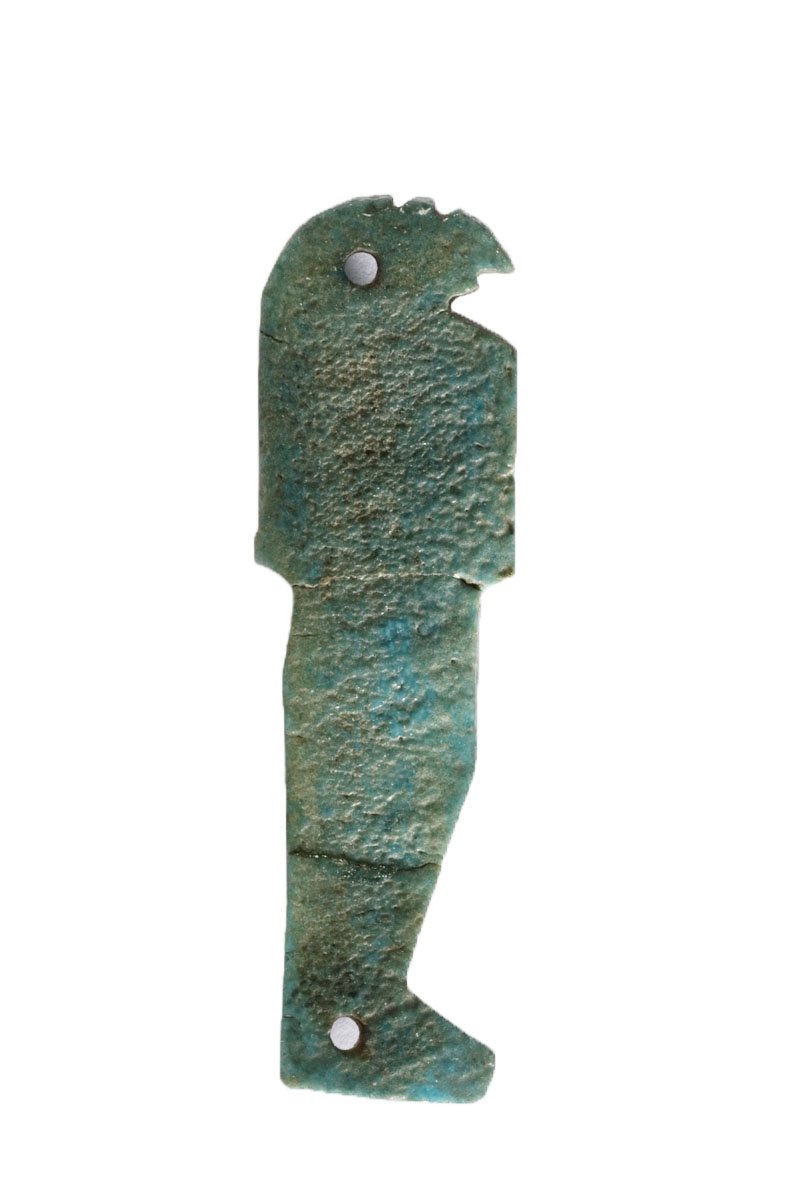
Amulett of Qebehsenuef
Egyptian Art
| Date | 7th–5th centuries BC |
|---|---|
| Object type | religious or cult object |
| Medium, technique | Limestone, painted |
| Dimensions | 6.2 × 8 × 4 cm |
| Inventory number | 51.1494 |
| Collection | Egyptian Art |
| On view | This artwork is not on display |
The female figure, carved from soft limestone, belonged to an erotic symplegma couple, dated to the Late Period; the term is used to refer to explicit depictions of sexual intercourse. The nude woman is portrayed in a half-crouching, half-kneeling position with her body extending forward on the base. Both arms are outstretched to frame her head turned to the right, the hands are joined before the top of the head. The eyebrows, the contours of the eyes, and the line of the mouth are indicated with black paint. Her hairstyle, also painted black, consists of striated locks. The ochre paint recalling the colour of the skin has been preserved mainly on the left side of the body. The woman’s right leg is bent in the knees with her foot looking forward; her right foot, now broken off with the lower part of the kneeling leg, once looked backwards. Above the buttocks, at the height of the sacrum, she is marked with a spectacular wedjat eye tattoo with the eyebrow-lane emphasised with reddish paint which by now has almost completely faded. Even though stand-alone female figurines are known among the closest parallels, the slightly asymmetric posture, the placing of the legs, the square-shaped tap hole between the buttocks as well as the badly damaged rear part ending in a stump clearly suggest that the female originally had a now lost male partner, broken off or deliberately removed.
A number of symplegma figure groups have been found in sites of Lower Egypt and the Memphite region, but the majority of them have no secure archaeological context. They display high variation in terms of their material (limestone, terracotta, and faience), type (figure plaque, sculpture in the round both moulded or carved) and composition. Their popularity was retained well after the Late Period, although their style and iconography have undergone profound changes during the Ptolemaic and Roman Periods, and certainly the same holds true for their function and underlying symbolism.
Figure groups depicting copulating couples normally include a male and a female but exceptions do occur. The male figure is usually a youth with an oversized, erect penis (ithyphallic), his young age is expressed by a side-lock and his child-like features like short and chubby limbs; his consort is typically a larger-sized adult female. The overt representation of a sexual intercourse has been suggested to be associated with the sacred union (hieros gamos) between Isis-Hathor, the distant goddess returning to Egypt and the god Osiris, the resulting divine birth of Horus-the-Child (Harpokrates), and, in a figurative sense, the fertilization of Egypt’s land by the Nile flood. A wide variety of erotic figure groups could have been mass-produced in the workshops and distributed in conjunction with festivals celebrating the conception and nativity of gods. Furthermore, since the sexual act was also associated with concepts of rebirth in the afterlife, such figurines may be claimed to have been used as votive offerings to promote successful conception and grant the mother and the infant magical protection in the perilous time of early childhood. The wedjat eye tattoo on the Budapest piece at least lends some credibility to this theory, as it fits perfectly the general ancient Egyptian birth imagery.
This record is subject to revision due to ongoing research.